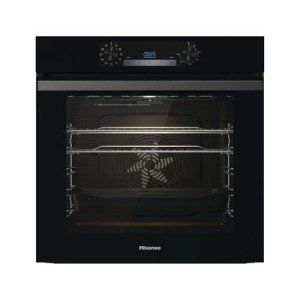The Most Effective Reasons For People To Succeed In The Built-In Oven Industry
Understanding Built-in Ovens and Hobs: The Perfect Kitchen Combination
As modern cooking areas develop, built-in appliances are becoming significantly popular for both functionality and looks. Among these appliances, built-in ovens and hobs stand apart as essential elements for any cooking lover or home cook. This short article explores the advantages, features, and considerations surrounding built-in ovens and hobs. It likewise resolves typical questions, providing a comprehensive guide to these kitchen fundamentals.
What are Built-in Ovens and Hobs?
Built-in ovens are integrated into kitchen cabinets, developing a smooth, seamless look. They come in different types, including traditional, convection, and steam ovens, each catering to different cooking approaches. Hobs, on the other hand, are the cooking surface areas that incorporate with the kitchen countertop. They can be gas, electric, or induction, enabling cooks to select based upon their cooking style and energy preference.
Advantages of Built-in Ovens and Hobs
- Space-Saving: Built-in designs optimize kitchen space by removing the need for freestanding units, developing an open and airy environment.
- Aesthetic Appeal: Their streamlined design contributes to a contemporary, structured appearance in the kitchen.
- Improved Functionality: Built-in ovens often include innovative cooking innovation, using a series of features like self-cleaning and wise controls.
- Personalization: Manufacturers provide a variety of surfaces and styles, allowing property owners to tailor their appliances to match their kitchen décor.
Kinds Of Built-in Ovens
1. Traditional Ovens
Standard ovens use convected heat from the bottom and can be ideal for baking.
2. Convection Ovens
Convection ovens have a fan that flows hot air, guaranteeing even cooking. They lower cooking time and are best for roasting meats or veggies.
3. Steam Ovens
Steam ovens use moist heat to cook food, maintaining nutrients and tastes. They are ending up being progressively popular among health-conscious cooks.
4. Microwave Ovens
These ovens offer fast heating and cooking and serve various functions, from reheating leftovers to baking.
Types of Hobs
1. Gas Hobs
Gas hobs use gas or propane for cooking. They provide immediate heat control, making them a preferred amongst expert chefs.
2. Electric Hobs
Electric hobs have strong or ceramic surface areas that warm up through electric coils. They are simple to tidy however might take longer to heat than gas models.
3. Induction Hobs
Induction hobs utilize electro-magnetic energy to straight heat up pots and pans, using rapid heating and energy efficiency. They cool down rapidly and offer a safer cooking experience.
Factors to Consider When Choosing Built-in Ovens and Hobs
When picking built-in ovens and hobs, numerous factors should be considered:
1. Area Limitations
Step the offered area in your kitchen to ensure that the appliances will fit effortlessly into the kitchen cabinetry.
2. Cooking Style
Consider your cooking practices. If you regularly bake, a convection oven may be ideal. Meanwhile, induction hobs are excellent for safety and performance.
3. Budget
Pricing differs significantly based on functions and brands. Setting a spending plan helps narrow down the options.
4. Energy Source
Determine whether you desire gas or electric appliances. This choice can affect cooking performance and energy expenses.
5. Aesthetic appeals
Pick finishes and designs that complement your kitchen's style. Stainless steel is a popular choice for a modern-day appeal.
Comparison of Built-in Ovens and Hobs
Feature
Built-in Oven
Built-in Hob
Type
Convection, steam, etc.
Gas, electric, induction
Cooking Versatility
High
Moderate to high
Cleaning Ease
Differs by design
Generally simple to clean
Setup Style
Integrated in kitchen cabinetry
Flush with counter top
Energy Efficiency
Differs by design
Induction generally most efficient
FAQs About Built-in Ovens and Hobs
1. Are built-in ovens more costly than freestanding models?
Yes, built-in ovens generally feature a higher price due to their design and installation requirements. Nevertheless, they frequently offer advanced functions.
2. Can I replace my existing freestanding oven with a built-in design?
Yes, it's possible to change a freestanding oven with a built-in design, however you might require to make modifications to your kitchen cabinetry and kitchen design.
3. What maintenance do built-in ovens and hobs need?
Routine cleaning is vital. Numerous built-in ovens featured self-cleaning features. electric oven gas hob built in 's likewise crucial to keep the hobs without spills and grease.
4. Are induction hobs safe for families?
Induction hobs are considered more secure than gas or electric choices because they just heat up the pots and pans, decreasing the danger of burns or accidents.
5. How can I take full advantage of the efficiency of my built-in oven and hob?
To maximize efficiency, constantly pre-heat the oven when required, utilize the right size pots or pans on the hob, and consider using the residual heat from your hob after cooking.
Built-in ovens and hobs supply numerous benefits, making them popular choices for contemporary kitchen areas. Their space-saving styles, advanced features, and visual appeal contribute to their high need. By considering aspects like space, cooking style, and spending plan, house owners can pick the best mix of appliances that best match their cooking requirements. Whether through gas, electric, or induction hobs, and a range of oven types, the best built-in kitchen appliances can improve the cooking experience while raising the general visual of the kitchen.
